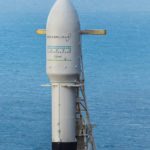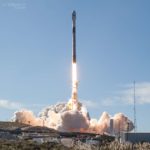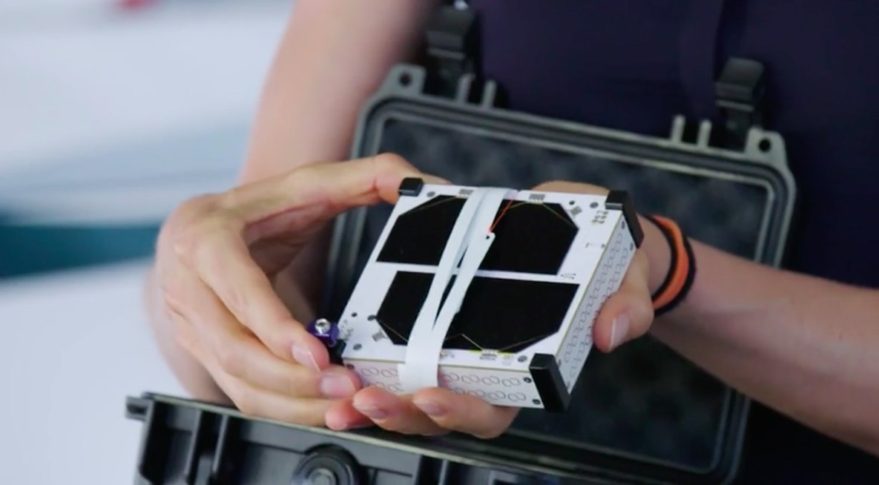
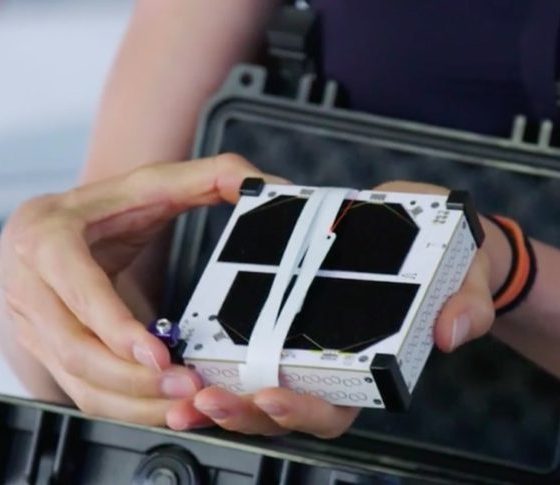
News
Startup fined $900k for launching illegal satellites, points to future space law challenges
Swarm Technologies, Inc., a satellite startup aiming to create the world’s lowest-cost satellite network, has been fined $900,000 by the U.S. Federal Communications Commission (FCC) for illegally launching and deploying four unauthorized satellites into orbit in January 2018 on a commercial Indian satellite launch vehicle. The satellites in question were Swarm’s SpaceBEE vehicles, which measure one quarter the size of a traditional CubeSat, a class of small satellites measuring 10 cm in height, width, and depth. In December 2017, the FCC deemed the SpaceBEE size too small for the U.S. Air Force’s traditional technology to track with routine methods and declined a license, but the satellites were placed into orbit regardless. With satellite and rocket launch startups proliferating as space access becomes more affordable, the debate over ensuring safety in this international arena is likely expand.
Swarm requested an experimental license from the FCC in April 2017, a first step for any satellite operator to ensure compliance with current international space laws, and their plan was to launch in September 2017, although that date was later delayed. Spaceflight Industries was next hired to connect Swarm with a launch provider and ensure its integration with the rest of the rocket’s payload. After the FCC declined the license in December 2017, Swarm applied for a new license in January 2018 for satellites meeting CubeSat specifications, but the original SpaceBEEs were already loaded onto the contracted Indian Polar Satellite Launch Vehicle (PSLV) and subsequently launched on January 12, 2018.
When news of the SpaceBEE deployment broke, concerns over regulatory backlash spread throughout the satellite community. The FCC issued an Enforcement Advisory on April 12, 2018 warning about consequences for communications companies failing to comply with licensing requirements, including a note to launch providers on how launch activities may be impacted if an unauthorized satellite payload needs to be removed. In a decision released December 20, 2018, Swarm Technologies was ordered to pay the fine and implement a five-year compliance plan.
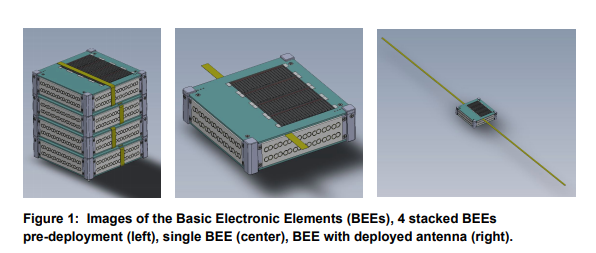
Since the very first satellite was successfully launched by the Soviet Union on October 4, 1957, activities in space have been largely conducted by national governments and companies affiliated with them. However, the new space era is quickly changing that environment, rapidly opening up the beyond-Earth domain to private citizens. Billionaires like Elon Musk of Tesla and SpaceX, Jeff Bezos of Amazon and Blue Origin, and Richard Branson of Virgin and Virgin Galactic have mostly been the face of private/commercial space industry in recent years, but the technologies they’ve developed are also ushering in a new wave of affordable access to space, and with it, new technologies that don’t fit the traditional mold of “old space”.
The legal foundation for current space laws is the 1967 Treaty on Principles Governing the Activities of States in the Exploration and Use of Outer Space, including the Moon and Other Celestial Bodies, i.e., the “Outer Space Treaty”. Under this Treaty and subsequent treaties and laws arising from it, states, or nations, rather, are responsible for any space activities conducted by their own nationals, meaning a regulatory process that must be enforced. Where access to space was once expensive and difficult, the significantly lowered threshold has brought in a field full of players ready to take their shot at participating in the coming space economy and maybe, as seen with Swarm Technologies, even take a few risks to get there.
While the illegal launch of Swarm’s satellites was caught rather quickly (first by the community of amateur space trackers) and action was taken to penalize it, what’s to stop nations in the future from lowering standards to attract private customers? As stated in the FCC’s Enforcement Advisory, “Satellites authorized by an administration other than the United States do not require any FCC approval if Earth station operations are exclusively outside the United States.” Pressure from the international community to comply with treaties will only work to the extent that 1) the penalties deter the profit potential from the industry; 2) the international community agrees the activity is actually unsafe; and 3) the resistance to reforming regulations to permit the activity in question is deemed justified. Innovation, especially out of Silicon Valley, has a history of breaking rules to bring about significant change; however, some would argue that space isn’t the place for that approach.
- The thrice-flown, Falcon 9 Block 5 rocket that put Swarm’s recent 3 satellites in orbit (all FCC approved): SpaceBEE-5, 6, and 7. | Credit: Pauline Acalin
The thrice-flown, Falcon 9 Block 5 rocket that put Swarm’s recent 3 satellites in orbit (all FCC approved): SpaceBEE-5, 6, and 7. | Credit: Pauline Acalin
The problem seems to be a simple matter of ethics: Don’t launch things into space that aren’t safe for Earth’s occupants. But according to the FCC, Swarm’s proposed satellites were merely “below the size threshold at which detection by the Space Surveillance Network (SSN) can be considered routine.” The licensing issue seemed to generally only be safety-related because of the satellites’ irregularity, not from the lack of actual tracking capability, something that is only going to increase as more players enter the new space arena.
Another point worth consideration is that Swarm’s SpaceBEE satellites are actually trackable using the same SSN network the FCC cited in its rejection of Swarm’s license request, and live tracking is ongoing via an independent tracking service called LeoLabs. According to Dr. Sara Spangelo, one of the co-founders of Swarm Technologies, the satellites are equipped with radar retro-reflector technology, something developed by a US-Navy research and development lab, which makes their radar signature as bright as a CubeSat. The FCC has also granted the company a temporary experimental authorization to test the previously-illegal satellites’ orbital and tracking data. Thus, the question for the future is not so much whether the safety concerns are valid, but whether preventative rules will be waived where newer technology can demonstrate their compliance outside traditional standards.

News
Tesla Full Self-Driving v14.2 – Full Review, the Good and the Bad

Tesla rolled out Full Self-Driving version 14.2 yesterday to members of the Early Access Program (EAP). Expectations were high, and Tesla surely delivered.
With the rollout of Tesla FSD v14.2, there were major benchmarks for improvement from the v14.1 suite, which spanned across seven improvements. Our final experience with v14.1 was with v14.1.7, and to be honest, things were good, but it felt like there were a handful of regressions from previous iterations.
While there were improvements in brake stabbing and hesitation, we did experience a few small interventions related to navigation and just overall performance. It was nothing major; there were no critical takeovers that required any major publicity, as they were more or less subjective things that I was not particularly comfortable with. Other drivers might have been more relaxed.
With v14.2 hitting our cars yesterday, there were a handful of things we truly noticed in terms of improvement, most notably the lack of brake stabbing and hesitation, a major complaint with v14.1.x.
However, in a 62-minute drive that was fully recorded, there were a lot of positives, and only one true complaint, which was something we haven’t had issues with in the past.
The Good
Lack of Brake Stabbing and Hesitation
Perhaps the most notable and publicized issue with v14.1.x was the presence of brake stabbing and hesitation. Arriving at intersections was particularly nerve-racking on the previous version simply because of this. At four-way stops, the car would not be assertive enough to take its turn, especially when other vehicles at the same intersection would inch forward or start to move.
This was a major problem.
However, there were no instances of this yesterday on our lengthy drive. It was much more assertive when arriving at these types of scenarios, but was also more patient when FSD knew it was not the car’s turn to proceed.
Can report on v14.2 today there were ZERO instances of break stabbing or hesitation at intersections today
It was a significant improvement from v14.1.x
— TESLARATI (@Teslarati) November 21, 2025
This improvement was the most noticeable throughout the drive, along with fixes in overall smoothness.
Speed Profiles Seem to Be More Reasonable
There were a handful of FSD v14 users who felt as if the loss of a Max Speed setting was a negative. However, these complaints will, in our opinion, begin to subside, especially as things have seemed to be refined quite nicely with v14.2.
Freeway driving is where this is especially noticeable. If it’s traveling too slow, just switch to a faster profile. If it’s too fast, switch to a slower profile. However, the speeds seem to be much more defined with each Speed Profile, which is something that I really find to be a huge advantage. Previously, you could tell the difference in speeds, but not in driving styles. At times, Standard felt a lot like Hurry. Now, you can clearly tell the difference between the two.
It seems as if Tesla made a goal that drivers should be able to tell which Speed Profile is active if it was not shown on the screen. With v14.1.x, this was not necessarily something that could be done. With v14.2, if someone tested me on which Speed Profile was being used, I’m fairly certain I could pick each one.
Better Overall Operation
I felt, at times, especially with v14.1.7, there were some jerky movements. Nothing that was super alarming, but there were times when things just felt a little more finicky than others.
v14.2 feels much smoother overall, with really great decision-making, lane changes that feel second nature, and a great speed of travel. It was a very comfortable ride.
The Bad
Parking
It feels as if there was a slight regression in parking quality, as both times v14.2 pulled into parking spots, I would have felt compelled to adjust manually if I were staying at my destinations. For the sake of testing, at my first destination, I arrived, allowed the car to park, and then left. At the tail-end of testing, I walked inside the store that FSD v14.2 drove me to, so I had to adjust the parking manually.
This was pretty disappointing. Apart from parking at Superchargers, which is always flawless, parking performance is something that needs some attention. The release notes for v14.2. state that parking spot selection and parking quality will improve with future versions.
Any issues with parking on your end? 14.1.7 didn’t have this trouble with parking pic.twitter.com/JPLRO2obUj
— TESLARATI (@Teslarati) November 21, 2025
However, this was truly my only complaint about v14.2.
You can check out our full 62-minute ride-along below:
Elon Musk
SpaceX issues statement on Starship V3 Booster 18 anomaly
The incident unfolded during gas-system pressure testing at the company’s Massey facility in Starbase, Texas.

SpaceX has issued an initial statement about Starship Booster 18’s anomaly early Friday. The incident unfolded during gas-system pressure testing at the company’s Massey facility in Starbase, Texas.
SpaceX’s initial comment
As per SpaceX in a post on its official account on social media platform X, Booster 18 was undergoing gas system pressure tests when the anomaly happened. Despite the nature of the incident, the company emphasized that no propellant was loaded, no engines were installed, and personnel were kept at a safe distance from the booster, resulting in zero injuries.
“Booster 18 suffered an anomaly during gas system pressure testing that we were conducting in advance of structural proof testing. No propellant was on the vehicle, and engines were not yet installed. The teams need time to investigate before we are confident of the cause. No one was injured as we maintain a safe distance for personnel during this type of testing. The site remains clear and we are working plans to safely reenter the site,” SpaceX wrote in its post on X.
Incident and aftermath
Livestream footage from LabPadre showed Booster 18’s lower half crumpling around the liquid oxygen tank area at approximately 4:04 a.m. CT. Subsequent images posted by on-site observers revealed extensive deformation across the booster’s lower structure. Needless to say, spaceflight observers have noted that Booster 18 would likely be a complete loss due to its anomaly.
Booster 18 had rolled out only a day earlier and was one of the first vehicles in the Starship V3 program. The V3 series incorporates structural reinforcements and reliability upgrades intended to prepare Starship for rapid-reuse testing and eventual tower-catch operations. Elon Musk has been optimistic about Starship V3, previously noting on X that the spacecraft might be able to complete initial missions to Mars.
Investor's Corner
Tesla analyst maintains $500 PT, says FSD drives better than humans now
The team also met with Tesla leaders for more than an hour to discuss autonomy, chip development, and upcoming deployment plans.

Tesla (NASDAQ:TSLA) received fresh support from Piper Sandler this week after analysts toured the Fremont Factory and tested the company’s latest Full Self-Driving software. The firm reaffirmed its $500 price target, stating that FSD V14 delivered a notably smooth robotaxi demonstration and may already perform at levels comparable to, if not better than, average human drivers.
The team also met with Tesla leaders for more than an hour to discuss autonomy, chip development, and upcoming deployment plans.
Analysts highlight autonomy progress
During more than 75 minutes of focused discussions, analysts reportedly focused on FSD v14’s updates. Piper Sandler’s team pointed to meaningful strides in perception, object handling, and overall ride smoothness during the robotaxi demo.
The visit also included discussions on updates to Tesla’s in-house chip initiatives, its Optimus program, and the growth of the company’s battery storage business. Analysts noted that Tesla continues refining cost structures and capital expenditure expectations, which are key elements in future margin recovery, as noted in a Yahoo Finance report.
Analyst Alexander Potter noted that “we think FSD is a truly impressive product that is (probably) already better at driving than the average American.” This conclusion was strengthened by what he described as a “flawless robotaxi ride to the hotel.”
Street targets diverge on TSLA
While Piper Sandler stands by its $500 target, it is not the highest estimate on the Street. Wedbush, for one, has a $600 per share price target for TSLA stock.
Other institutions have also weighed in on TSLA stock as of late. HSBC reiterated a Reduce rating with a $131 target, citing a gap between earnings fundamentals and the company’s market value. By contrast, TD Cowen maintained a Buy rating and a $509 target, pointing to strong autonomous driving demonstrations in Austin and the pace of software-driven improvements.
Stifel analysts also lifted their price target for Tesla to $508 per share over the company’s ongoing robotaxi and FSD programs.
